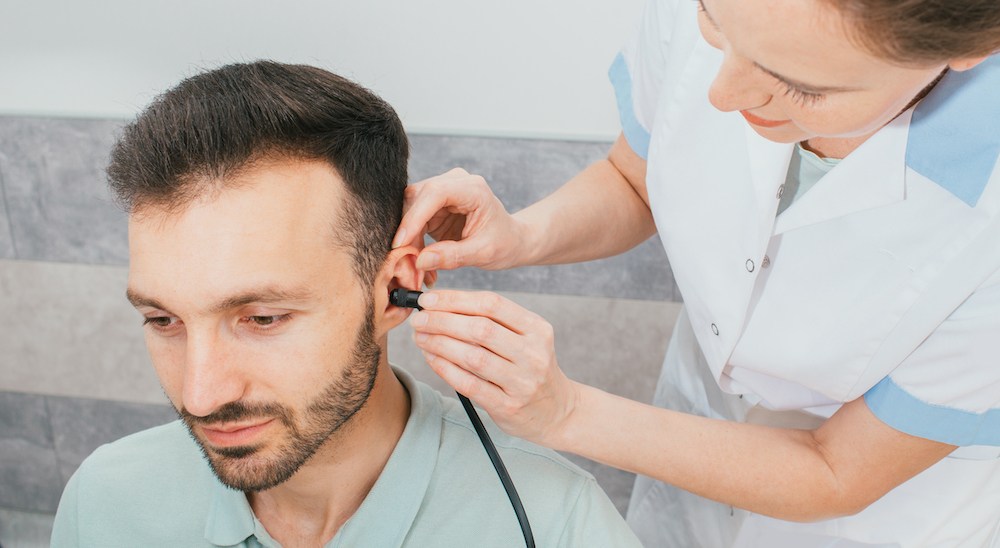The Challenges of Using Hearing Aids in Cold Weather
Winter is on its way, and with it comes a unique set of challenges for

By: admin | February 15, 2023
If you’re one of the estimated 30-million Americans who experience hearing loss, you know how important it is to find the best protection and treatment for your condition. Audiology is a field of medicine devoted to diagnosing and treating hearing loss and audiologists are the experts in finding the right solution for your needs.
In this blog post, we’ll discuss audiology and some of the critical terms and ratings associated with hearing protection and treatment. We’ll also provide an overview of the different types of hearing aids available today. So, if you’re looking for more information about audiology or want to learn more about protecting your ears, keep reading!
Audiology is the science of hearing, balance and related disorders. Audiologists are trained to diagnose hearing loss in patients and develop treatment plans to address hearing-related issues. Audiologists also provide hearing protection devices like earplugs or custom-fit hearing protection molds.
When it comes to hearing protection, there are several key terms and ratings to consider.
The American National Standards Institute (ANSI) rating system is used to grade hearing protection devices according to their ability to reduce noise-induced hearing loss. This rating is based on the average amount of decibels (dBs) that a hearing protector or hearing aid can block.
Noise reduction rating is one of the most important ratings to consider when choosing hearing protection. NRR is a number that shows how well a hearing protection can stop noise from damaging your ears. The higher the rating, the more hearing protection it provides.
Hearing protection can come in earplugs, small pieces of foam or rubber that fit into the ear to block out noise. They’re typically disposable and come in different sizes to accommodate different-sized ears. Earmuffs are another hearing protection that covers the whole ear and often provide more hearing protection than earplugs.
Expandable foam hearing protection earplugs are made from a soft, malleable foam that expands to fit the size of your ear canal. This hearing protection can provide an NRR rating of up to 33dBs and can be used multiple times before needing to be replaced.
Pre-molded hearing protection earplugs are designed to fit the contours of your ear, providing better hearing protection than traditional foam or rubber hearing protectors. They can give an NRR rating of up to 33dBs and can be used multiple times before needing to be replaced.
Canal caps hearing protectors are small plastic caps that fit into the ear canal and provide hearing protection. They can give an NRR rating of up to 25dBs and are disposable after each use.
Earmuffs provide hearing protection by completely covering the ear and blocking out noise. They can give an NRR rating of up to 30dBs and come in different styles, including over the head, behind the head and headband models.
Custom earplugs are made from a soft silicone material that is custom molded to fit your unique ear shape. These earplugs offer a higher level of hearing protection than traditional foam or rubber hearing protectors and can provide an NRR rating of up to 33dBs.
No matter what type of hearing protection you use, it’s essential to always read the label and understand the rating system before purchasing hearing protection.
It’s important to remember that hearing protection and hearing aids should only be purchased from a qualified audiologist. Audiologists will work with you to find the best hearing aid or hearing protection device for your needs and lifestyle. They can also provide hearing tests and hearing rehabilitation services and advice on preventing hearing loss in the future.
Hearing loss is common among people of all ages, but it doesn’t have to be permanent. By finding the proper hearing protection and hearing aids, you can protect your hearing and reduce the risk of hearing-related complications. In addition, with the help of an audiologist, you can ensure that hearing loss does not become a permanent part of your life.
By following these tips and talking to a qualified audiologist about hearing protection and hearing aids, you can ensure that you’re taking the necessary steps to protect your hearing now and in the future. With a hearing protection and hearing aid plan, you can continue enjoying all of your favorite activities without worrying about hearing loss.
Suppose you’re looking for more information about hearing protection or hearing aids get in touch with Sommerville Audiology & Hearing Aid Center today. With their help, you can find the best hearing protection and hearing aid. Call Sommerville Audiology & Hearing Aid Center today at 586-298-3788

Winter is on its way, and with it comes a unique set of challenges for
By: admin | January 31, 2024

When it comes to hearing aids, there are plenty available on the market,
By: admin | December 28, 2023

Ensuring your overall well-being involves making regular hearing tests a
By: admin | November 25, 2023
